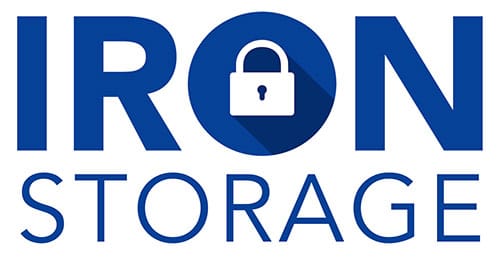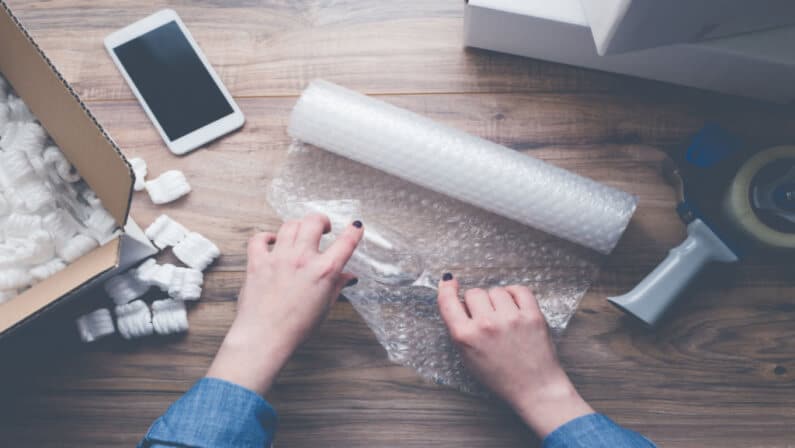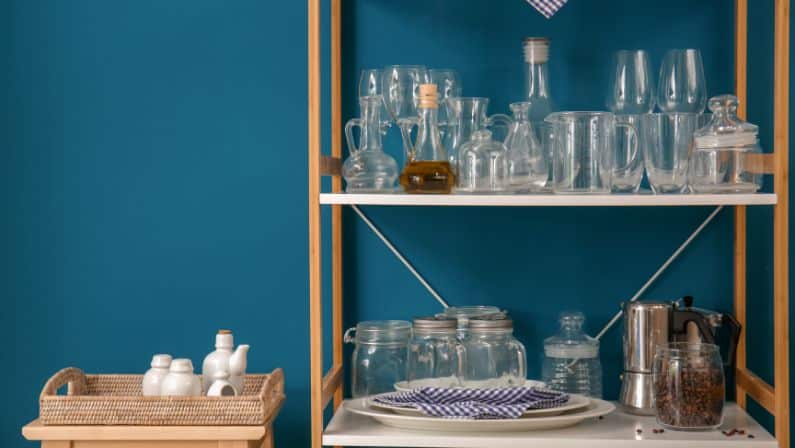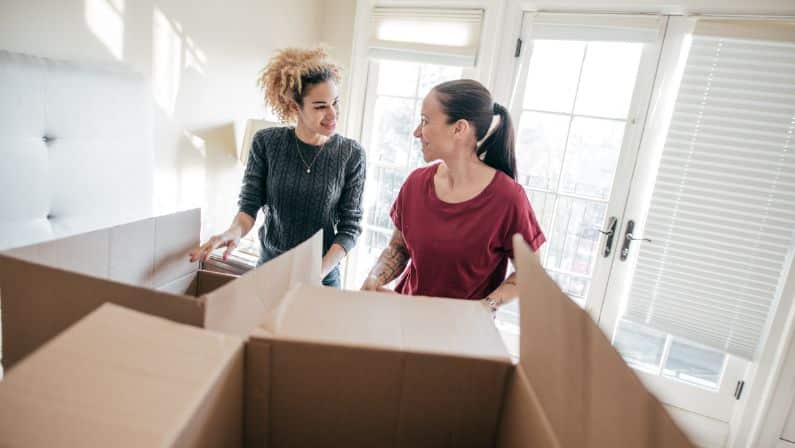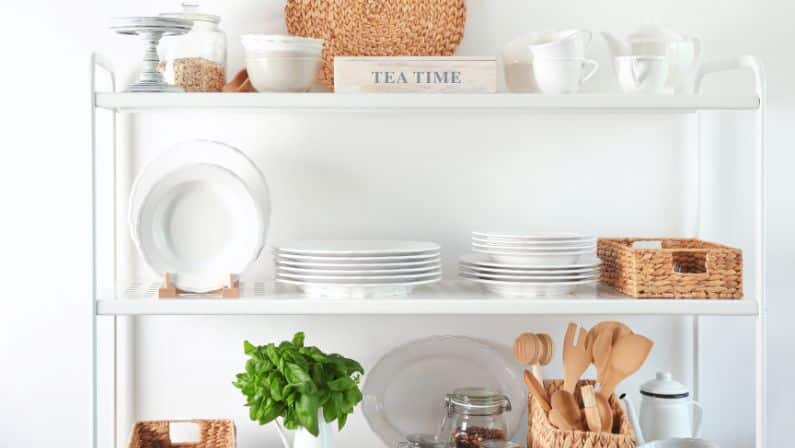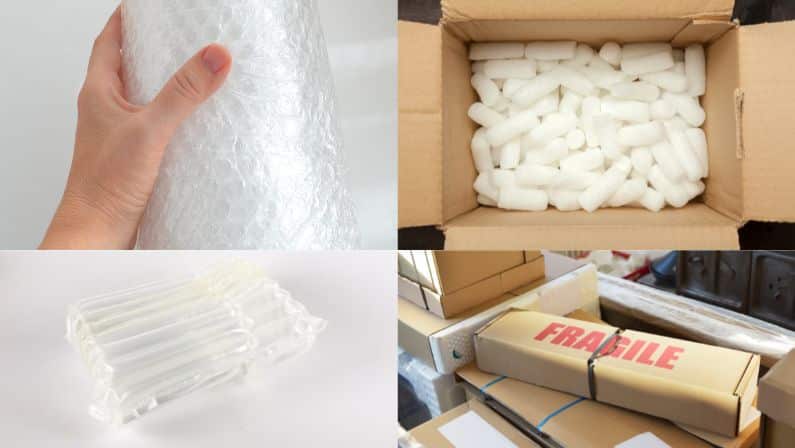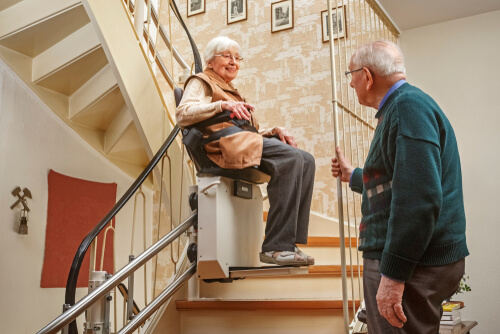What is The Best Way to Store Fragile Items?
When moving, you will want to take special care when storing things like mirrors, vases and pots. How you store these items is critical to how they will fare during your move. The last thing you want is to find your fragile items broken into pieces when your movers unload the truck at your new home.
Here are eight tips on how to store fragile items. It includes best practices on how to pack fragile items for moving.
Why it’s important to store your fragile items
Storing your fragile items properly can help prevent them from being damaged in the event of a disaster. By storing them safely, you can reduce the chances of losing any irreplaceable items and ensure that they are available for recovery in the event that something goes wrong.
What are the examples of fragile items?
Fragile items are those that can be easily broken or damaged.
Some common examples of fragile items include:
- Glassware
- Porcelain
- Jewelry
- Plants
- Furniture
- Gadgets
- Vases
- Paintings
- Christmas ornaments
These materials are often difficult to clean and require special care when handling.
Tips on how to store fragile items
There are a few things to keep in mind when storing delicate items:
1. Clean fragile items before storing them
Dust and dirt can damage delicate surfaces over time. Remember that dust settles on your item even when it’s not used, so if you don’t clean it off regularly the dirt will build up and create scratches on the surface of your dishes or glassware.
2. Wrap each fragile item separately
Wrap your fragile items individually in bubble wrap or some other kind of protective wrapping. If you have a lot of small, delicate items, this can take a while and might seem like an unpleasant task at first. But it’s worth investing the time to do it properly so that your items are protected as much as possible during their journey.
3. Use the right kind of packing materials
There are many types of packaging materials available on the market. You can use bubble wrap, packing peanuts or newspaper as your primary method for cushioning the item. But if you want something more durable and reusable, old clothes may be a better option if they fit snugly around your fragile item(s).
4. Choose the right size box
If you choose a box that is too small, your fragile item may break during transport. On the other hand, if you use a box that is too big, it may be more difficult to pack up and store later.
For example: If you want to store wine glasses in your home library’s bookshelf, use a medium-size cardboard box with high sides and secure corners for easier removal later on.
5. Load heavier items at the bottom of the box and lighter ones on top
This will help keep the fragile items safe from moving around during transit. Make sure too that they don’t have too much empty space inside. This will help keep them from moving around during transit.
6. Store away from heat, humidity and sunlight
The best way to store fragile items is in a cool and dry place. Avoid direct sunlight, high humidity, and areas with high heat. Keep your items in their original boxes, as this will help protect them from damage. If you don’t have the original packaging, be sure to wrap fragile items with bubble wrap or paper towels before storing them away.
7. Look for climate-controlled storage lockers
Climate-controlled storage lockers are basically a safe place to store your valuables. They’re like mini refrigerators that keep the temperature low and stable, which is good for sensitive items. If you’ve ever gone to a museum or art gallery, you’ve probably seen some of these types of storage lockers—they’re usually white or clear with an orange stripe along the bottom, and they have either a digital or dial thermostat that allows you to select a desired temperature range.
8. Don’t forget to label your boxes
As you’re packing, don’t forget to label your boxes. Label them with the contents and the room where they belong. The labels should be easy to read and can be written in permanent marker on masking tape. You can also use stickers or make labels out of scrapbook paper or cardstock that matches your decor.
Best Packing Materials for fragile items
Below are some of the most common types of fragile items that need special attention during a move, along with which packing materials work best when moving them.
Packing Paper
Packing paper is a great alternative to bubble wrap. It is less expensive than bubble wrap and easier to use. It also has the added benefit of being more environmentally friendly than bubble wrap. Use packing paper for breakables, glass, ceramics and other fragile items that need extra protection in transit.
Styrofoam Packing Peanuts
Styrofoam packing peanuts are the most common type of packing material. They’re soft, they’re biodegradable and they’re cheap to buy. But they also have their downsides—for example, if you’re shipping liquids like oil or wine, styrofoam peanuts won’t do the trick because they absorb water and expand when wet. Styrofoam packing peanuts are great options for storing fragile Christmas ornaments.
Bubble Cushioning
Bubble cushioning is made from air-filled plastic bubbles that surround the item being shipped, protecting it from damage and shifting during transit. They can be purchased at any major shipping supply store or purchased through a third-party provider like ShipStation or Parcelful depending on your needs.
Packing foam
When you’re wrapping up a fragile item, like an antique vase or crystal wine glass, it’s best if you use packing foam to ensure your item doesn’t break during the shipping process. Packing foam can also be used to protect items that are being shipped via air mail or even on buses and trains for long distances.
Specialty packing kits
Specialty kits can be purchased through moving companies. They are especially helpful for packing fragile items like china, glassware and other breakable items. The specialty kit includes materials that are designed to protect your items and make sure they arrive safely at their destination. Some of the materials included in these kits include bubble wrap, cushioning peanuts and paper sheets.
How to choose the right storage unit for your fragile items
Now that you know how to protect fragile items, especially when moving, let’s take a look at what makes a storage unit ideal for them.
Climate Control
The ideal temperature range for a storage unit is between 65°F and 75°F. This is important because you don’t want your valuables to freeze or get too hot. If you have any items that you know will be damaged by exposure to extreme temperatures, like antiques or electronics, look for climate-controlled units with digital monitoring systems that allow you to set the desired temperature where you want it.
Drive-Up Access
Drive-up access is a great feature for people who need to store large items, such as cars. However, it can sometimes be difficult to find a facility that offers drive-up access. For example, some businesses may not offer drive-up access because they are located in an area with too much foot traffic or other safety concerns.
If you’re looking for a storage unit with this feature, it might be worth checking out multiple facilities before making your final decision.
Surveillance
Security cameras are an important part of any self-storage unit, as they help to prevent theft and damage to your belongings. While it’s not the most exciting feature, it can make a huge difference in the long run.
What should you look for in a storage unit with surveillance? First and foremost: how often does the facility check their security footage? It may sound like a trivial detail, but if you’re storing valuable or irreplaceable items (such as family photographs), then having an up-to-date record of who was entering and exiting your unit is crucial.
You’ll also want to know what kind of camera system they have in place—this can range from basic CCTV cameras to sophisticated infrared night vision systems that will see even through pitch blackness!
Finally, don’t forget about price; just because something looks good on paper doesn’t mean it will suit your budget.
Adequate lighting
When you’re storing your belongings, you want to make sure that they’re stored in the best conditions. This means that you must have adequate lighting in your unit. Lighting is one of the most important elements for protecting your items from damage by dust, moisture and other substances. Without proper lighting, these substances can easily seep into the cracks and crevices of your belongings and cause corrosion or mold growth.
Easy Moving and Loading
The storage unit should be easy to get in and out of. If you have trouble getting up and down, or if you have a bad back or any other mobility issues, look for a facility that has ramps or elevators. If you can’t drive, look for a location with valet service so that someone else can pick up your items when they’re time is up.
Contact a Storage Expert
With so many options available, it can be difficult to know which option is best. The most important thing is that you find a storage unit that works for your needs. Please feel free to contact our friendly staff at Iron Storage. We will be happy to help.
Author
-
Faraz Hemani has been in the self storage industry for several years. He is on the executive team at Iron Storage, and has helped grow the company through acquisitions, operations and strategic initiatives.
View all posts
